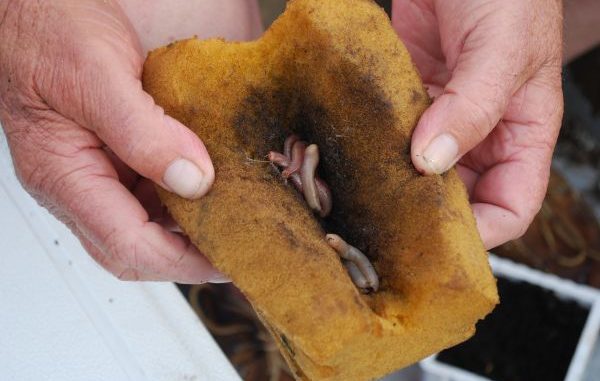
First timers to Lake Boeuf should probe and hunt, concentrating their efforts near duck blinds because they provide permanent cover, Steve Bourgeois advised.
“If you see twigs of vegetation sticking up from the water in a clear area near a blind, don’t pass that up,” Bourgeois said. “That means cover underneath the water.”
On the flip side, he suggested that, in areas of a lot of vegetation, fishermen should fish in clearings.
But success isn’t about setting up shop in any one location.
“Fishing Lake Boeuf means you have to move a lot,” Bourgeois laughed. “Make 10 or 12 casts and move if you don’t catch. Look for a pattern. Every year we have to find them again. Then when you find them, fish those spots over and over again until July, when fishing plays out.”
Although both men said the lake can’t be “fished out,” they stressed that hotspots change from day to day.
“It’s a big lake and never really gets crowded,” Andrew Blanchard said.
He added that the big flotants — the floating islands of dense vegetation — play a role in fishing.“Flotants will move,” Blancard said. “When the moss gets real thick and a flotant moves with the wind, it will clear a spot in the moss.
“When you see that, come back the next day and fish in it.”
Their preferred bait is earthworms.
“With crickets, you have to stop and rebait after you miss a bite,” Bourgeois explained.
Earthworms are a better bait for lake runners than are crickets, as well.
“We like Canadian worms,” Blanchard said. “They are tougher and last a long time.”
Bourgeois agreed.
“They can be stored in a refrigerator for 3 or 4 months,” he said.
Their final tip is a note of caution.
“It’s a big lake, and you can get turned around real easy,” Bourgois said. “Paying attention isn’t enough; it all looks alike.”
His observation was entirely correct. Fishing the lake was like fishing a maze of water and islands of vegetation. Running in a straight line is nearly impossible, and anglers concentrating on finding fish quickly can invariably lose sight of where they entered the lake. A couple of hundred yards into the lake and the entrance to Theriot Canal disappears.
Using a GPS is best way to avoid a lot of frustration. Gadget-less anglers should look for a vague indentation on the south side of the lake in the otherwise uniform tree line that surrounds the water body.
Besides Theriot Canal, fishermen also can access the lake from a boat launch at Kraemer and a smaller one at Choctaw.
